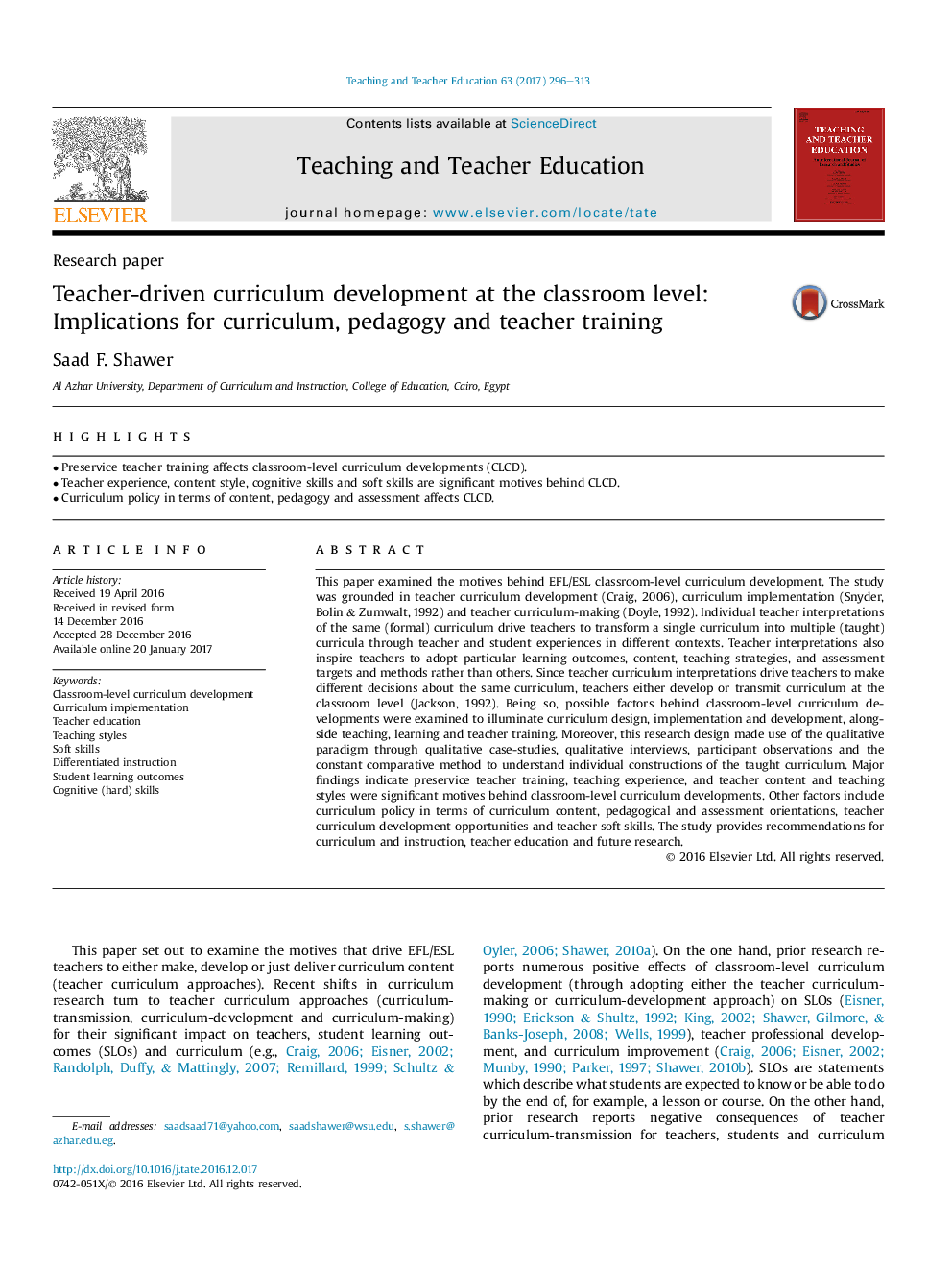ترجمه فارسی عنوان مقاله
توسعه برنامه درسی معلم در سطح کلاس: اثرات برنامه درسی، آموزش و آموزش معلم
عنوان انگلیسی
Teacher-driven curriculum development at the classroom level: Implications for curriculum, pedagogy and teacher training
| کد مقاله | سال انتشار | تعداد صفحات مقاله انگلیسی |
|---|---|---|
| 126558 | 2017 | 18 صفحه PDF |
منبع

Publisher : Elsevier - Science Direct (الزویر - ساینس دایرکت)
Journal : Teaching and Teacher Education, Volume 63, April 2017, Pages 296-313
ترجمه کلمات کلیدی
توسعه برنامه درسی کلاس درس، پیاده سازی برنامه درسی، آموزش معلم، سبکهای تدریس، مهارت های نرم افزاری، آموزش متمایز، نتایج یادگیری دانش آموزان، مهارت های شناختی (سخت)
کلمات کلیدی انگلیسی
Classroom-level curriculum development; Curriculum implementation; Teacher education; Teaching styles; Soft skills; Differentiated instruction; Student learning outcomes; Cognitive (hard) skills;

